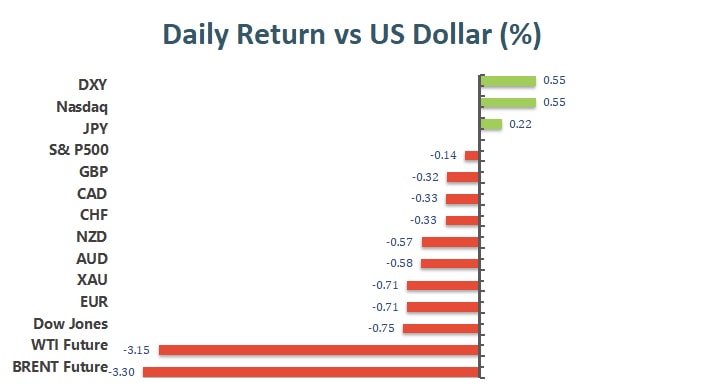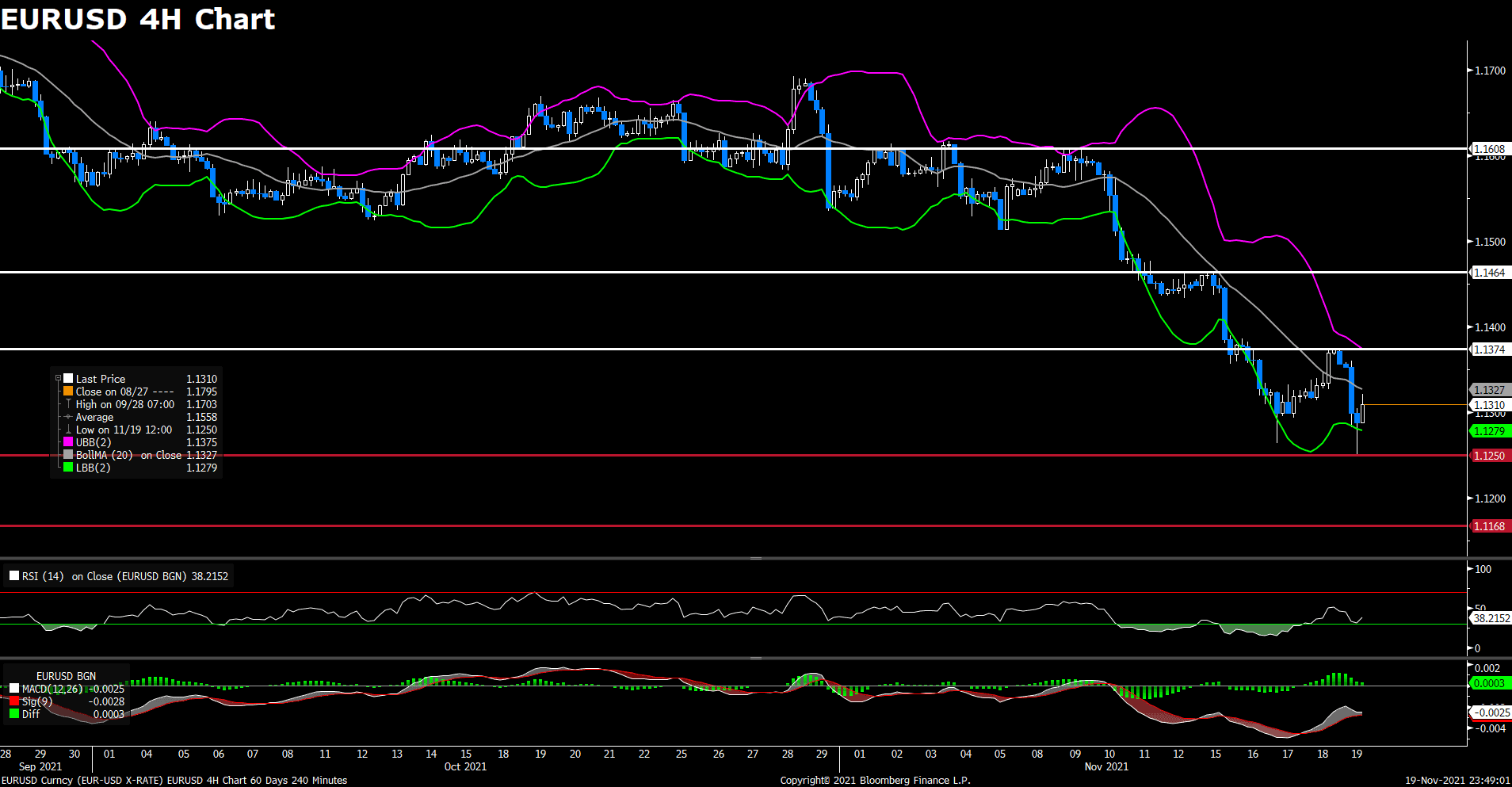Market Focus
Stocks looked set to fall Monday weighed by growing concerns over nationwide COVID-19 lockdowns in Europe that raised fears about new restrictions beyond the continent, and the risk of a faster withdrawal of Federal Reserve stimulus. The Treasury yield curve was near the flattest since the pandemic’s onset. Stocks ended mixed on Friday, Dow Jones slid 200 points, or 0.6%, settling at its lowest levels in 3 weeks and down 1% on the week, while the S&P 500 notched a slim daily gain, 0.32% throughout the week. However, the Nasdaq Composite set a fresh record, bolstered by rallying technology shares.

Former Credit Suisse Group AG bankers have told criminal investigators that the bank is still helping U.S. clients hide accounts from the Internal Revenue Service, even after the firm paid $2.6 billion in penalties in 2014 and promised to stop the practice.
The latest allegations of wrongdoing come during a tumultuous year for the Zurich-based bank, which lost $5.5 billion in the blowup of family office Archegos Capital Management and had to unwind client funds that were managed with collapsed lender Greensill Capital. It also is happening weeks after the U.S. Justice Department vowed to crack down on corporations that repeatedly violate the law.
The bankers who came forward said that Credit Suisse opened accounts for South American clients who held dual citizenship, but bank documents failed to indicate they were U.S. citizens, according to people familiar with the matter. Some of the accounts held tens of millions of dollars, the people said. U.S. taxpayers are supposed to pay taxes on income earned anywhere in the world, and disclose their offshore accounts to the Treasury Department, even if they have dual citizenship.
Over the summer, those bankers were interviewed by U.S. tax prosecutors, IRS criminal agents and U.S. Senate investigators, the people said. Credit Suisse still faces fallout from the 2014 guilty plea of its main banking unit, which admitted helping thousands of Americans evade taxes.

Main Pairs Movement:
The greenback may remain its robust northern momentum in the week ahead as markets turn to important macro risks from the U.S. Inflation has been a hot topic in the country, with headline price growth at its most aggressive since the early 1990s using YoY timeframes. Now, the Federal Reserve’s preferred gauge of inflation, core PCE, is in focus.
It is expected to breach the 4.1% YoY record in October, up from previous 3.6%. That would be the fastest pace since January 1991. Ongoing elevated price readings above the central bank’s target would likely continue to keep Fed policymakers on their toes. Still, the broader argument from the central bank remains that the recent bout of inflation is ‘transitory’.
EUR/USD closed on Friday with another dip to below the 1.1300 threshold, and GBP/USD also dropped hard to around 1.3440. Commodity-linked currencies slumped severely as well, with USD/CAD regained 1.2650, AUD/USD fell to the 0.7230 level, and erased its gains on Thursday, again fell underneath 0.7000. Japanese Yen is the top performer among the majors, outplaying the vigorous US dollar amid lower US yields and falling equity prices
Amid the strength of the US dollar, gold price slipped to $1845 a troy ounce, and crude oil prices savagely plummeted over 3%, with WTI plunged 4.07% to $75.30, and Brent dived 3.23% to $78.45.
Technical Analysis:

The pair EUR/USD declined on Friday amid US dollar strength, ending its previous rebound from 2021 lows near 1.126. The pair flirted with 1.136 level during Asian session, then started to see heavy selling in early European session. At the time of writing, EUR/USD has rebounded moderately and pared some of its losses, currently losing 0.50% on a daily basis. The stronger US dollar across the board is mainly due to risk-off market sentiment, as the DXY index touched a yearly high above 96.2. In Eurozone, German PPI report today showed that Producer Prices rose more than expected in October at a monthly 3.8%. But ECB’s Chairwoman Lagarde kept her dovish tone and said there is no rush to tighten the current monetary conditions, which put the EUR/USD pair under pressure.
For technical aspect, RSI indicator 38 figures as of writing, suggesting tepid bear movement ahead. For the MACD indicator, a diminishing positive histogram also indicates a downward trend for the pair. Looking at the Bollinger Bands, the price moved out of the lower band first and move immediately back inside the band, which means a bull movement. In conclusion, we think market will be bearish as the greenback’s appreciation should keep weighing on the pair. If price break below the 1.1250 support, the slide could extend further to 1.1168, which was touched in June 2020.
Resistance: 1.1374, 1.1464, 1.1608
Support: 1.1250, 1.1168

In line with EUR/USD pair’s price movement today, the pair GBP/USD also declined on Friday and dropped to a fresh daily low under 1.341 in early European session. Despite trying to rebound back above 1.347 level, the pair still stays in negative territory now, currently losing 0.17% on a daily basis. The UK Retail Sales data released today showed that retail sales in October rose by 0.8% on a monthly basis, better than market’s expectation for an increase of 0.5%. But the upbeat data failed to support the cable, as the risk-off market mood underpinned the safe-haven US dollar and dragged the cable lower.
For technical aspect, RSI indicator 52 figures as of writing, suggesting tepid bull movement ahead. As for the Bollinger Bands, the price crossed above the moving average after rising from lower band is moving alongside the upper band, therefore a upward trend continuation could be expected. In conclusion, we think market will be bullish as the pair might attract some dip-buyers and re-test the 1.3514 resistance. A break above that level should clear the way towards the 1.3607 mark
Resistance: 1.3514, 1.3607, 1.3698, 1.3834